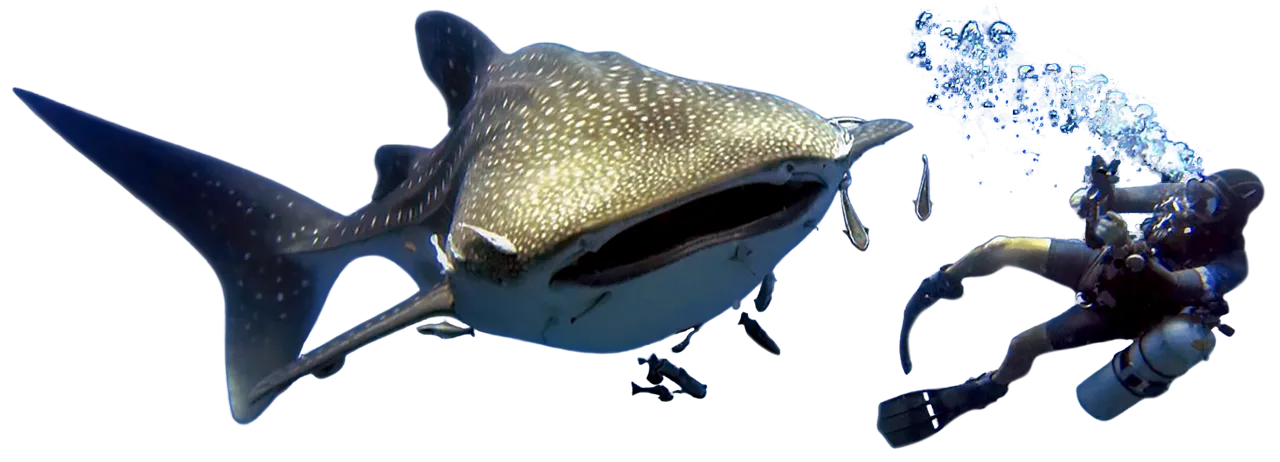Sidemount Diving Phuket
I go sidemount diving in Phuket anytime I get the chance. Whether it's for recreational or technical dives, it's my favourite style of scuba diving. There are many advantages to diving on sidemount and anyone who's serious about diving should at least give it a try.
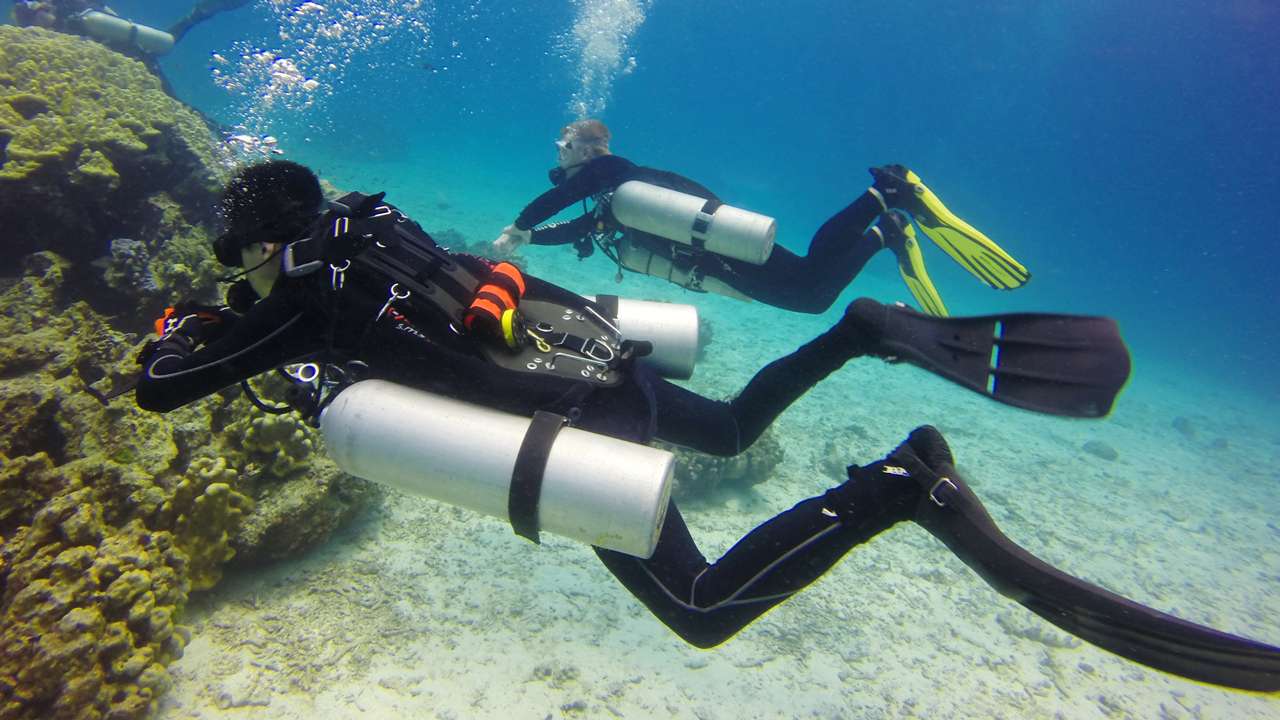
Book a 2 day sidemount diving course in Phuket with me - a fun day at the pool and then 3 dives on one of Phuket's dive tour boats - and enjoy this special style of diving, which is sure to benefit you for future diving experiences.
Or at least book a day at the pool to try out and learn to dive using either a dedicated sidemount system or, if you usually dive on a backplate and wing, one of my backmount wings with a sidemount adapter plate. If you enjoy it (and you should), you can choose to upgrade to the extra day to get the sidemount diving specialty certification!
For those that do choose to complete the sidemount diving specialty, I really recommend booking an extra day just to go sidemount diving for fun. Many divers do and love it!
So, what's sidemount diving all about? Read on...
Sidemount diving basics:
What is sidemount diving?
In case it's not obvious, sidemount diving is a style of diving where one or more scuba tanks (cylinders) are mounted on your side, rather than on your back. (Dah!)
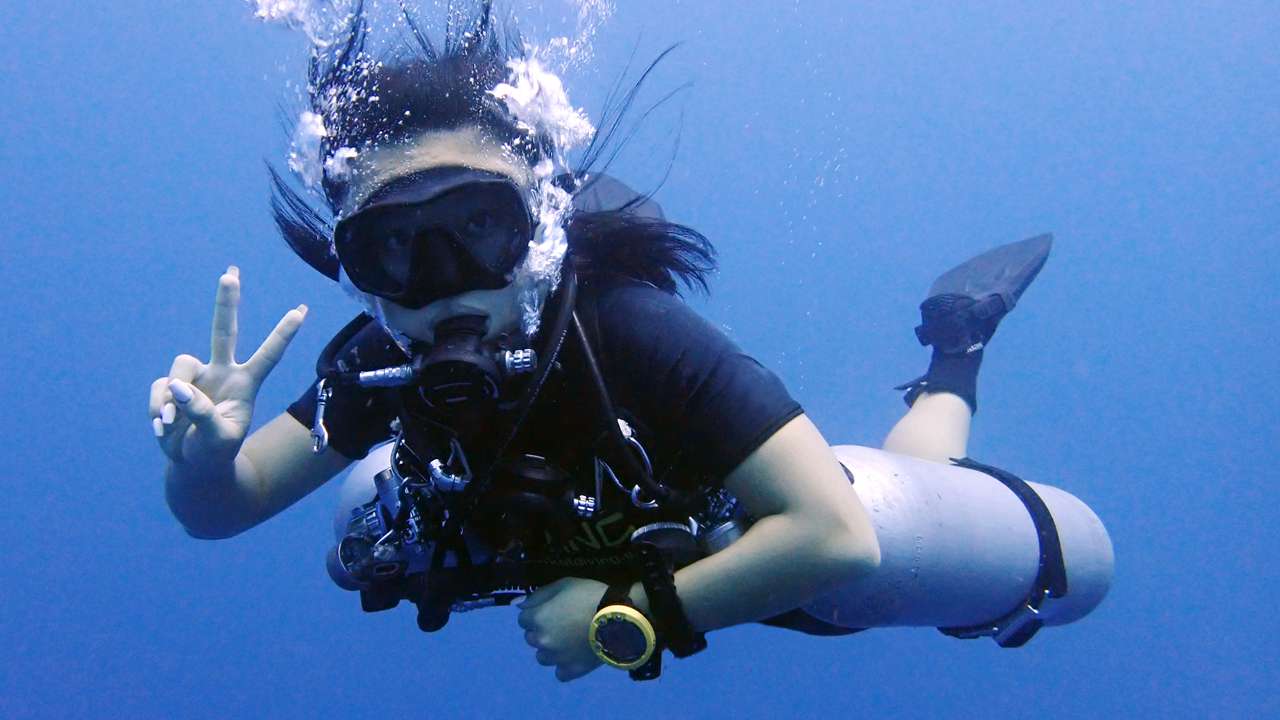
Why dive sidemount?
Sidemount diving, whether it's using a single tank, multiple tanks, recreational or technical sidemount, has to be one of the coolest styles of scuba diving!
Done well, sidemounting your tanks enables superior streamlining and therefore better gas consumption (SAC rate), as well as more efficient finning (especially in currents) and better maneuverability. Superb trim (your body's position underwater) is usually easy to establish too!
Using tanks in a sidemount configuration may also allow you dive in environments, such as caverns, caves and wrecks, that may not be accessible with other diving systems. Plus, you can have double the gas available (air or nitrox for example) to perhaps extend your dive, along with the added security of redundancy (a completely separate tank and regulator to breathe from, should the other fail).
Becoming a sidemount diver
There's a short class and practical session, to learn about the use of and how to configure a standard sidemount system, and then a half-day pool session, to learn and practice the necessary motor skills and to adjust to diving with tanks at your side. After that, the fun and freedom felt from diving a well set up sidemount system is awesome!
Also, adjusting and personalizing your sidemount diving setup to better suit you, the environment, the type of dives you want to do, or for the equipment available to you (whilst staying within the key concepts of a standardized sidemount configuration for safety) can be very beneficial and satisfying.
And when you know that you look good and dive well in sidemount, it's a real 'feel good'!
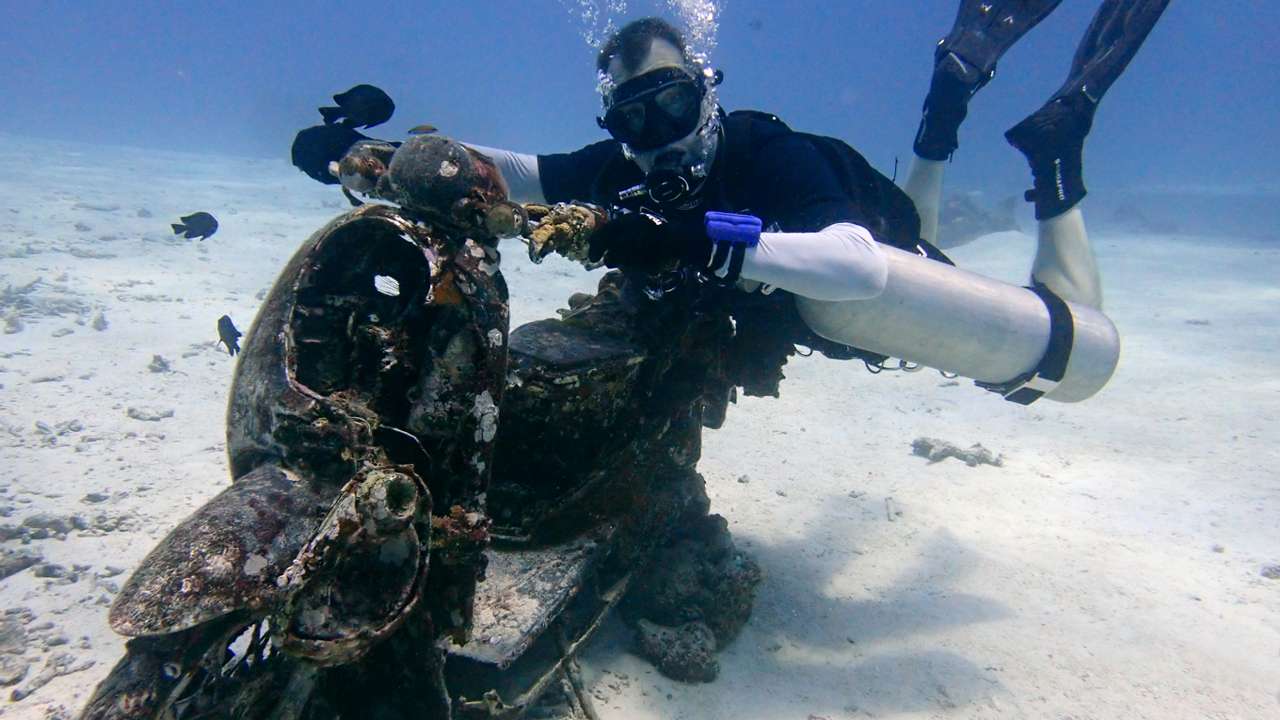
More sidemount diving benefits
Especially if you progress onto cave and technical diving, having easy access to multiple tanks and regulator first stages, plus the ability to don and remove tanks easily, becomes such an advantage with sidemount. And as previously mentioned, there are some penetration dives that you just couldn't do if using backmount cylinders!
Do you have a bad back? With sidemount, most of the weight of the tanks is carried on your hips... or you can simply put on / take off the tanks in the water whilst still wearing your sidemount BCD.
Is there a downside to sidemount diving?
For the best sidemount diving experience, it usually requires using a dedicated a sidemount diving setup (a harness with a sidemount BCD and a small difference in regulator configuration). However, a better diving experience generally means buying your own dive gear anyway! So why not just buy your own sidemount BCD and harness... and you can either buy your own regulators or a few hoses to allow for reconfiguring rented regulators!
Alternatively, if you already own a backmount wing with a backplate and harness, you can probably buy a backplate adapter that allows you to use sidemounted tanks. It may not be quite as streamlined as a dedicated sidemount BCD setup, but you'd gain all the other benefits - plus being able to return to using backmount whenever you wanted!
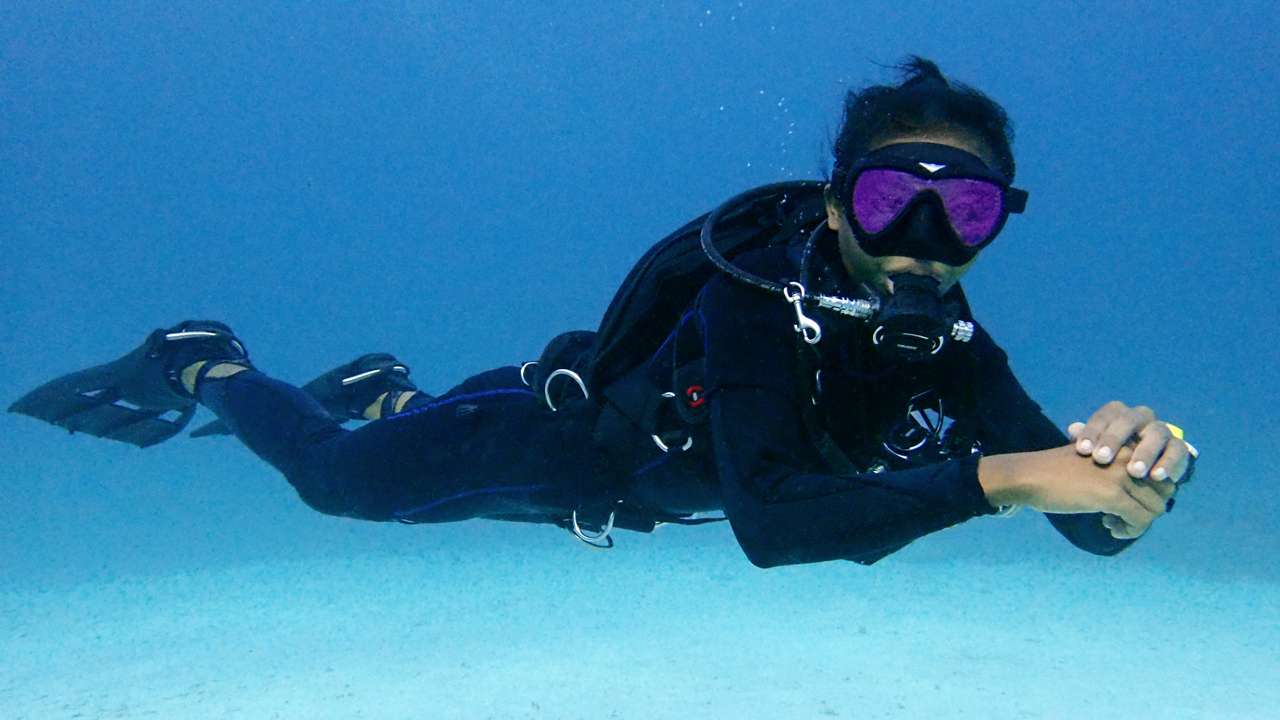
Is sidemount diving more 'cumbersome'?
Some divers would argue that there's more to set up and 'clutter' when diving sidemount - and generally that's true if comparing 2 tank sidemount to single tank backmount diving. However, sidemount diving on a single tank is just as easy and arguably more streamlined!
And if backmount diving, to get some of the same benefits as with multiple tank sidemount diving, you'd have to either dive with double backmount cylinders (which aren't always available, are very heavy to lift / wear, and usually require a wing with more lift), or dive a single backmount tank with a large pony bottle / stage cylinder, which is perhaps more cluttered and certainly not as streamlined as sidemount!
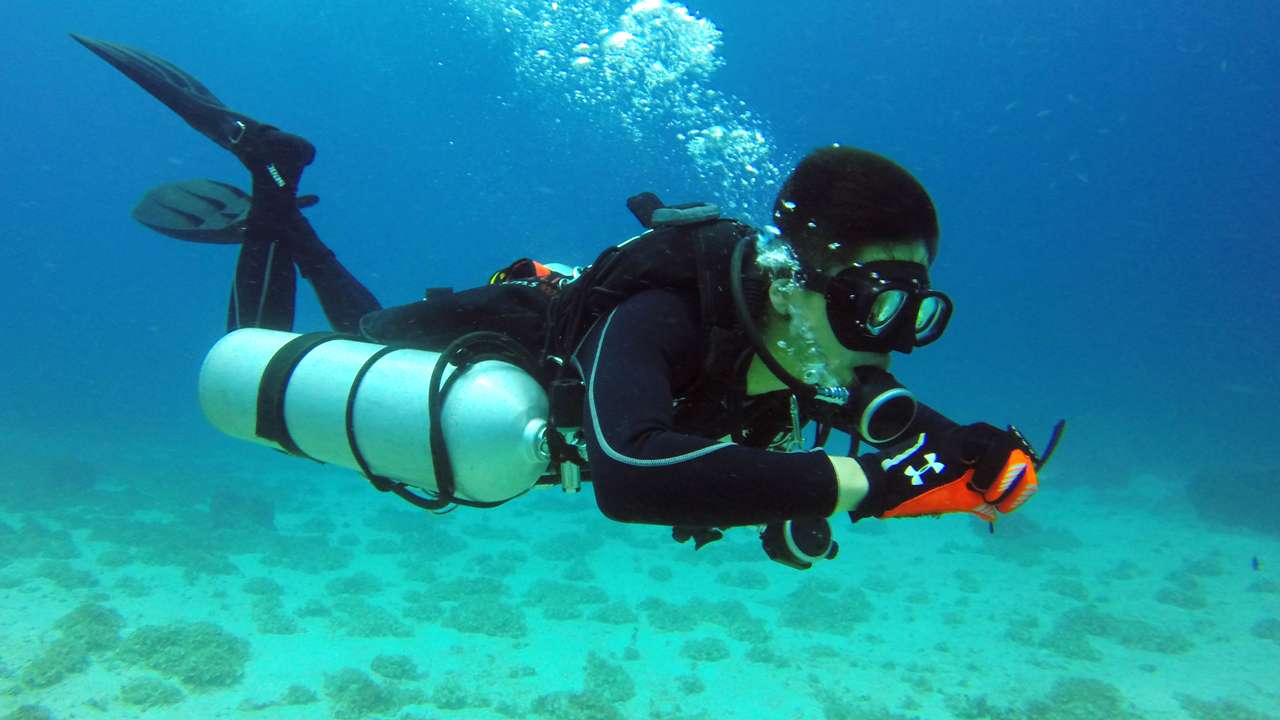
Summing Up Sidemount Diving
Although it's a little more involved than throwing a single tank on your back, the benefits and 'feel good' of diving on a well rigged, streamlined single or multiple tank sidemount system is hard to beat and something to really enjoy and be proud of.
Come sidemount diving in Phuket with me and I'll not only show you the 'proper' standardized way to configure and dive on a sidemount system, but I'll also explain and show you tips and tricks in the process, that I've learned from years of sidemount diving in Phuket.
Sidemount diving setup in finer detail:
To better understand how to dive well on sidemount, it's a good idea to first look at sidemount equipment choices and configuration in more detail.
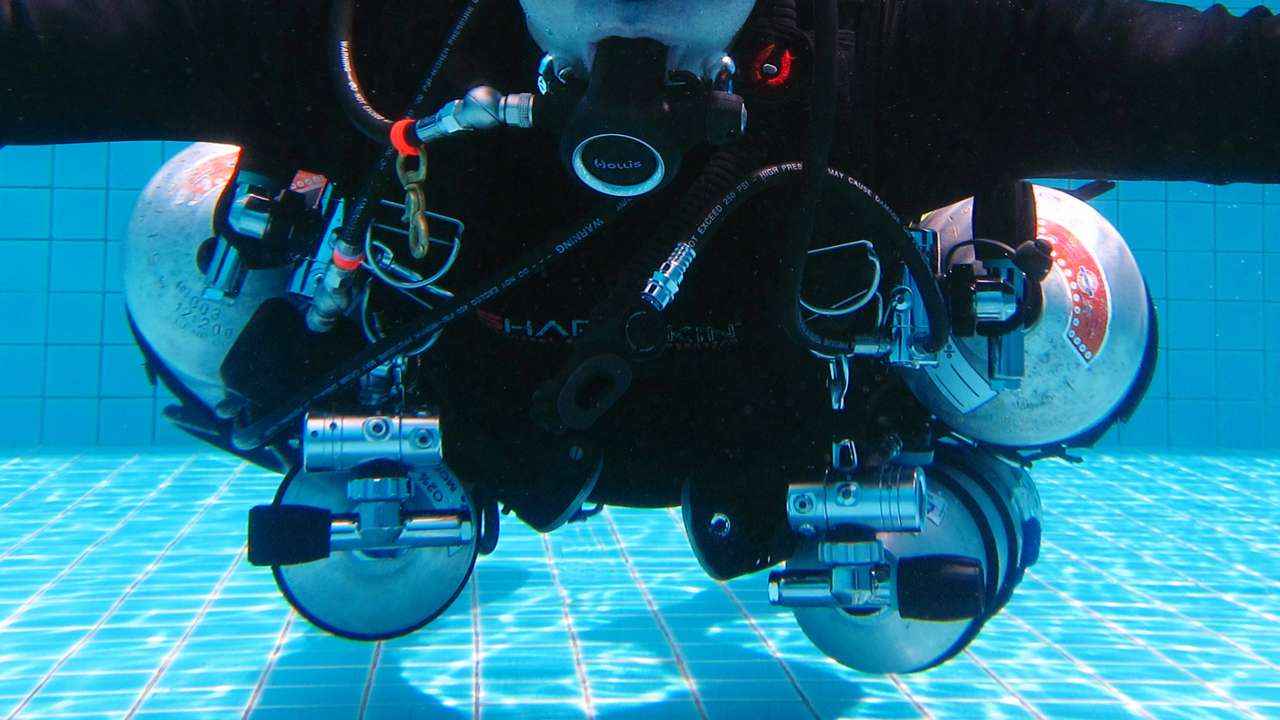
Steel or aluminium tanks? (cylinders)
Depending where you are diving, you may be either diving with steel or aluminium cylinders as your main sidemount tanks.
In cold water environments, steel tanks are more commonly used because they help offset the weight needed when diving in dry suits or very thick wetsuits. Aluminium tanks are more common in warm water environments, where less weight is required due to using skin suits / thinner wetsuits.
Steel tanks
Due to steel tanks being more negatively buoyant, they are generally easier to streamline because they tend to 'hang down' along a diver's side, the bottom of the tanks being clipped more the rear on the sidemount harness.
Aluminium tanks
Depending on if you are diving in salt or fresh water, or if the tank is full or empty, the buoyancy of an aluminium tank (whether it sinks or floats) can vary vastly and therefore requires more understanding of fitting options and will likely require adjustments during diving or the use of a few mounting 'tricks / variations'.
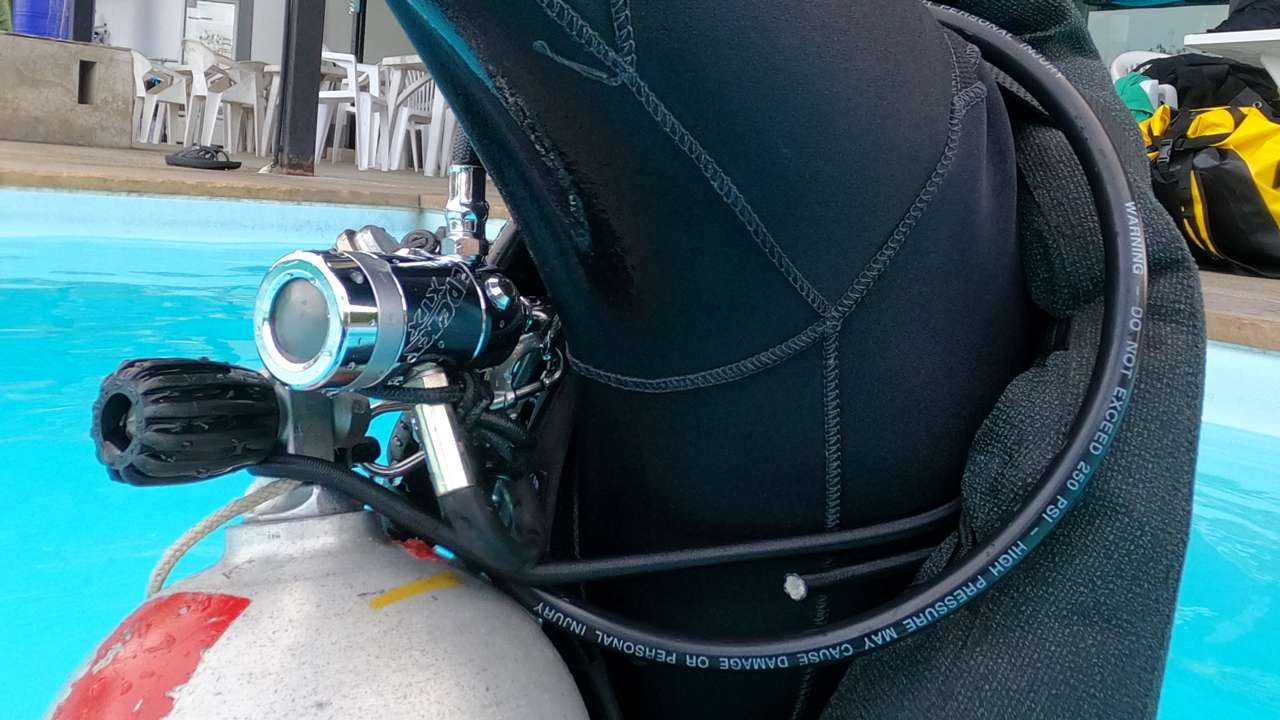
Tank valves
DIN valves are preferable, being more secure and less bulky, though yoke valves are acceptable for recreational sidemount diving. And therefore regulator first stages should match accordingly.
Left-hand and right-hand valves are also preferable and those with longer posts (as in valves used for manifolds) are a little better for bungee use. However, standard left-hand valves work fine in most cases, and sometimes these are all that are available.
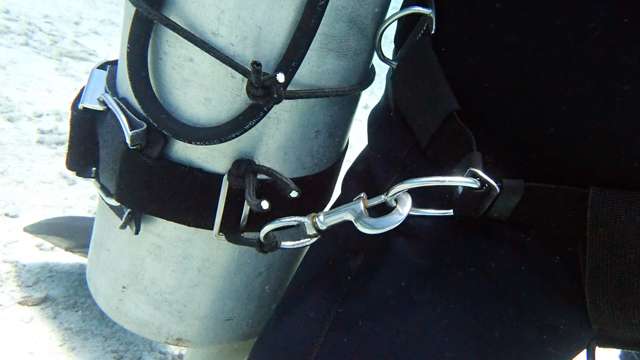
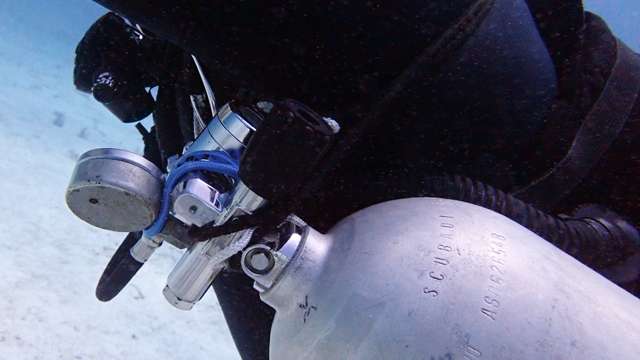
How are the tanks mounted?
The lower end of each tank is usually clipped to a hip d-ring on your harness, using a bolt snap (a sliding-gate clip - or sometimes double-ended) with a short piece of shock-cord / bungee linked to a tank-band or stainless-steel jubilee clip (band clamp with thread and worm screw to tighten it) that's large enough to go around the tank.
The neck of each tank is held close to the crook of your shoulder (just in-front of your armpit), via a looped bungee, attached to the rear / spine of your harness, that runs from behind your shoulder, under your armpit and then through / attached to a d-ring or similar fitting on your harness's shoulder strap.
Additionally, the neck of each tank may be 'hard-mounted' to your harness's shoulder d-ring via a bolt-snap or double-ended sliding-gate clip (double-ender) and a short piece of shock-cord / bungee that's looped around the tank neck. This is usually recommended if having to support / carry the tanks when out of the water. Some divers prefer to only hard-mount the top of the tanks (similar to wearing deco / stage / bailout tanks), however this means that the sidemount tanks tend to sit away from the shoulder and dangle. Using a bungee system is usually much better for streamlining and is more flexible when wanting to move the top of your tanks out / around a little (when viewing a pressure gauge for example).
Sidemount regulator setup
'Standard' sidemount regulators
Pressure gauges - On sidemount regulators, the pressure gauge for each tank is mounted on a short hose and is routed down along the tank, to protect it and avoid entanglement.
For single-tank sidemount diving, the components of the regulator configuration are almost the same as with back-mount, except for the shorter pressure gauge hose. The main second-stage would usually be routed up in-front of your left shoulder, then around the back of your neck and retained by a bungee that's also looped around your neck (though it may have an angled swivel at the second stage for comfort). The alternate second stage could either run down the tank and then back up to nearer the first-stage, secured by 2 bungees looped around the tank, so it could be easily deployed to a diver for sharing gas, but it may be preferable to similarly route it over the left shoulder / round the neck and clip it off to the right shoulder d-ring.
Many single-tank sidemount divers prefer to always use the long-hose second stage and only switch to the short-hose second stage for gas sharing, easily donating the long hose second stage from their mouth by passing it over their head.
Because single-tank sidemount is NOT sufficient for overhead environments / technical diving, it's not a requirement to have the alternate second stage on a long 2m / 7 foot hose, though again it may be preferable.
For double tank sidemount diving, where 2 independent tank and regulator sets are used:
The left-hand tank would have a high pressure gauge on a short hose pointing down along the tank, with a short hose second stage routed up in-front of your left shoulder, around the back of your neck and retained around your neck by a bungee loop. The first stage would also have either a short low pressure inflator (LPI) hose routed across your chest or a longer LPI hose routed over your shoulder, for connecting to the BCD's low pressure inflator
The right-hand tank would also have a downward pointing high pressure gauge on a short hose. The right-hand second stage would be on a long 2m / 7 foot hose, routed down and back up the tank, then in front / across the chest, over the left shoulder and round behind the neck. This would be the second stage used for gas sharing in restricted spaces, where the longer hose could be extended out in front for the receiving (out-of-air) diver to use.
Because, in double tank sidemount diving, it's necessary to switch second stages to balance gas usage and for changes in tank buoyancy, the long-hose second stage would either be in the diver's mouth or clipped off to the right shoulder d-ring. For gas sharing, the second stage would be passed over the donating diver's head, unclipping it from the shoulder d-ring if necessary.
Sometimes, where the sidemount system has backup / redundant BCD / bladder, the right-hand first stage may also have a low-pressure inflator hose, although some sidemount divers prefer to rely on oral inflation of a backup BCD / bladder.
Sidemount regulator setup variations
When short high-pressure hoses aren't available, it may be acceptable to use and route a standard-length hose down and back up the length of the tank, so long as it's bungeed against the tank.
In some cases, where perhaps physical conditions / personal preferences are an overriding factor, it may be acceptable to route pressure gauges pointing upward (on short hoses), though this should never be the case for technical diving because they may become an entanglement hazard and are certainly more exposed to being damaged.
For non-technical sidemount diving (and sometimes where overhead environments aren't restrictive), some divers prefer to simply route one or both second-stages (that are on shorter hoses with angled swivels) directly up to their mouths from the first stages - however the technical sidemount diving approach to configuring and routing second-stages is arguably better!
For a better understanding of sidemount diving configurations, come sidemount diving with me in Phuket! Even if not for a sidemount diving course, a few physical examples of sidemount equipment varations, some good explanations and adjustments during sidemount dives will make it all clear.
Sidemount BCDs and harnesses
There are a few variations in sidemount harness styles: where the shoulder straps connect to the lower part of the 'spine' strap versus connecting to the waistband (as in a braces) for example. There are also many different sizes and shapes of BCD, that offer different lift capacities and buoyancy / trim characteristics. And there are BCD and harness designs that are integrated (connected together, perhaps permanently) and some that are separate components that are put on independently.
But the biggest difference in sidemount BCD and harness styles are whether it's a dedicated sidemount system or a backmount wing, with backplate and harness, that's been adapted for sidemount use (there are also 'hybid' systems that fit into this category).
Dedicated sidemount BCD setup
Modern dedicated sidemount BCD setups usually consist of just a harness and BCD, though some may offer integrated weighting pouches / pockets and perhaps a small soft spine plate for padding.
The harness will have a number of attachment points / d-rings, both on the shoulder straps, waistband and crotch strap. The waistband should have a weightbelt 'quick release' style buckle and the shoulder straps may have buckles also, for ease of adjustment and donning, particularly on recreational sidemount diving style harnesses.
The sidemount BCD may have fixed attachment and bungeed attachment points, with an inflator hose assembly and at least one over-pressure / dump valve. Sidemount BCDs that have an integrated redundant / backup bladder will have also have an inflator hose assembly and over-pressure valve(s).
Undoubtably, a dedicated sidemount BCD and harness will enable you to get the best results from sidemount diving. Here in Phuket, I currently use XDeep Stealth Classic sidemount BCDs, either with the XDeep harness or with my own custom made harness. Sometimes I use my custom harness with a much smaller BCD, either for recreational sidemount diving or adding it to the Stealth Classic BCD for redundancy.
In Phuket there are many dive equipment suppliers, so I've also used the XDeep Stealth Tec and the Hollis Katana 2 sidemount BCDs. There are also other great sidemount systems available, such as Dive Rite's Nomad XT and the new Nomad Ray, as well as brands lesser know for sidemount like TecLine.
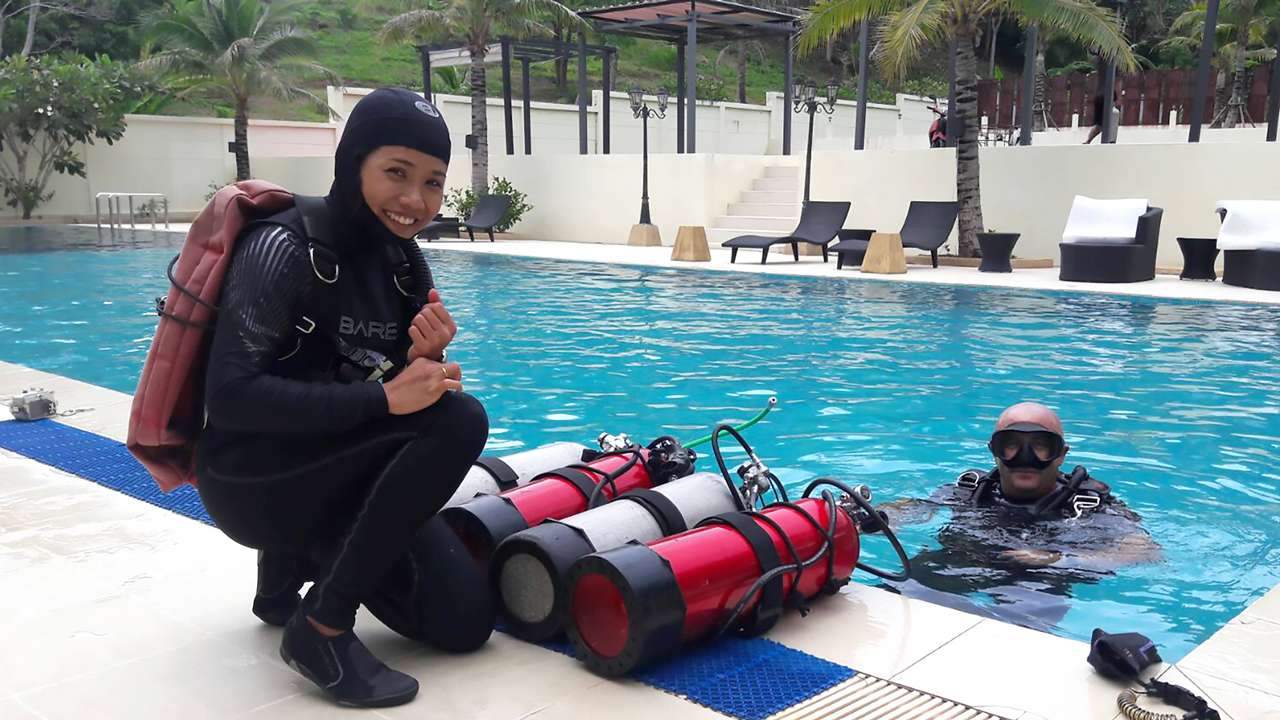
Adaptable / Hybrid sidemount BCD setups
Originally, sidemount diving was done by adapting existing backmount wing systems: pretty much by simply putting the wing on the inside of the backplate, so as to 'sandwich' the wing between the plate and the diver's back. This original sidemount BCD / wing system is referred to as 'Toddy Style'.
Previously, I adapted some of my OMS Wings to dive sidemount 'Toddy Style'. It certainly works, though can squeeze a little when more fully inflated depending on the wing used. Nowadays, there are much better 'Toddy Style' options available, such as this system at toddy-style.com .
For those divers who already own backmount wing systems, perhaps the best all-round option is to fit a sidemount adapter plate. A sidemount adapter plate usually has additional attachment points for clipping tanks and routing bungee cords, and is designed to hold the wing down closer to the diver's back and sides. Although less streamlined, a sidemount adapter plate is an inexpensive option that allows for most of sidemount diving's benefits. And because it's not necessary to adjust the original backmount setup much (rear tank bands would be removed for example), the diver isn't usually squeezed by the wing when inflated, plus it's easy to go back to backmounting their tank(s).
For divers who want a new BCD system that's capable of diving with both sidemounted and backmounted tanks but don't want the expense of 2 separate BCD systems, perhaps the best option is a Hybrid BCD. Some hybrid BCDs offer better streamlining than using a sidemount adapter plate with a backmount wing system. The Dive Rite Nomad XT is a particular favourite of mine and I've also used the Hollis SMS 100 Dual Bladder hybrid BCD for both sidemount and backmounted doubles.
Hybrid BCDs usually have a soft backplate attached to the harness, rather than an aluminium or stainless steel plate, and use another soft / flexible plate to sandwich / hold the BCD down and allow for more tank attachment points. The plates also include slots and eyelets that allow for single tank bands and double tank bolts.
What BCD setup do I recommend for sidemount?
Well, if just diving for myself, without a doubt I'd go for a dedicated sidemount BCD and harness. I'd choose a simple lightweight harness with a detachable BCD (for easier packing). And because I like the option for deco diving, the harness would have enough attachment points and the BCD would have enough lift to dive with both sidemount and deco tanks.
My current sidemount harness and BCD choices are light and compact - more so than any other that I've seen and certainly more than any backmount wing system / BCD - even with the hardware! (1 or 2 tankbands and clips)
And if you are worried about compatibility with other equipment: If travelling or for local recreational dives I'd take / use a single reg with two second stages. When I go tec diving from Phuket, I use multiple regulators of course, but for travelling I'd be happy taking a few sidemount regulator accessories to adapt rented regulators. The beauty of sidemount diving (as opposed to diving backmount doubles) is that you can use standard scuba cylinders!
Learn Sidemount Diving
PADI Sidemount Courses
There are 2 PADI Sidemount courses: Sidemount Diver and Tec Sidemount.
With the PADI Sidemount Diver course, you learn about sidemount equipment configuration and how to dive with 2 tanks, though there is an option for using a single tank too. You use the same gas in each tank and dive within recreational limits.
With the PADI Tec Sidemount course, you learn to use 4 tanks (or more) with multiple gases to manage. The course is not about learning to go past no-decompression / recreational limits, though the skills you learn will benefit you if you already have other open circuit technical diving certifications or are learning tec sidemount as part of other PADI tec courses - Tec 40, Tec 45 or Tec 50 for example.
I teach both of these sidemount courses, as well as technical / decompression diving.
Learn To Dive Sidemount Well
As for good technique and how one actually dives well on sidemount: that's where thorough instruction from an experienced sidemount instructor like myself comes into play. So, get in touch and come sidemount diving in Phuket with me.
